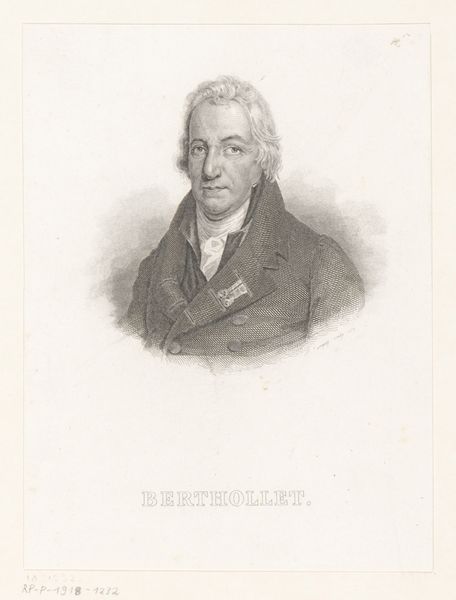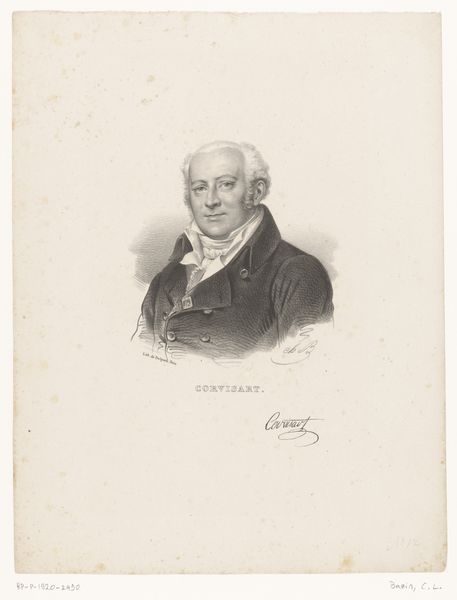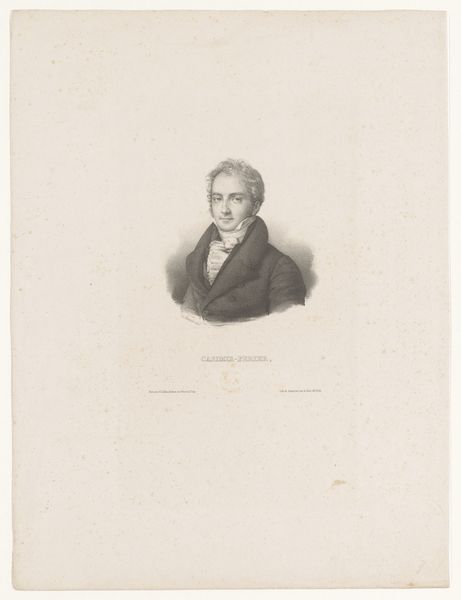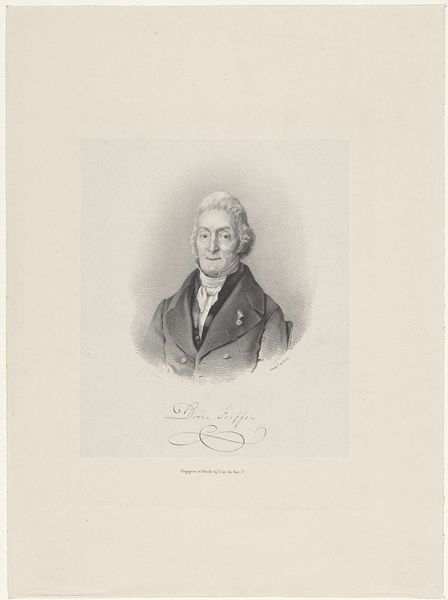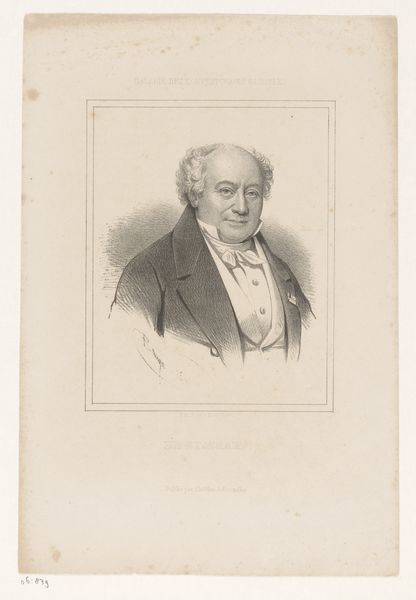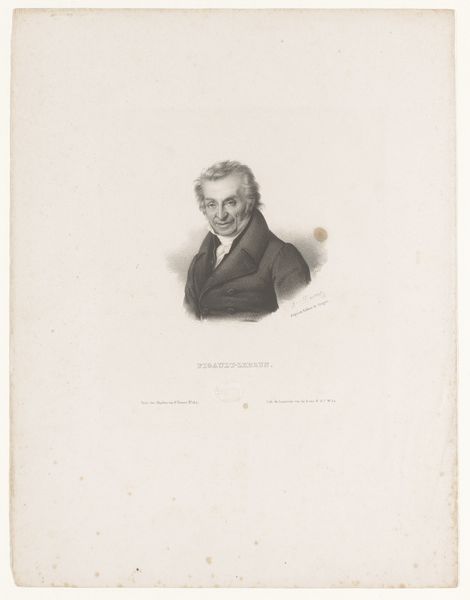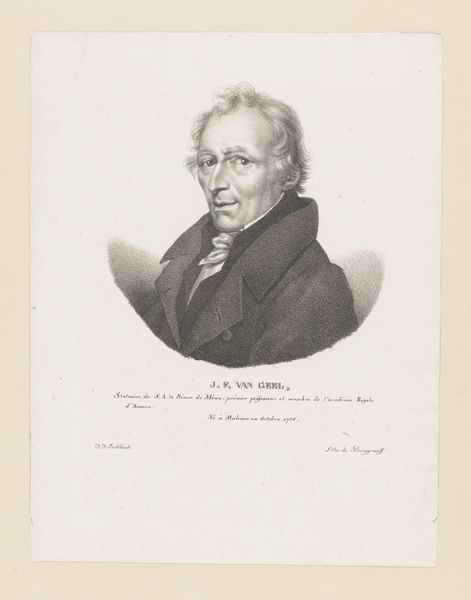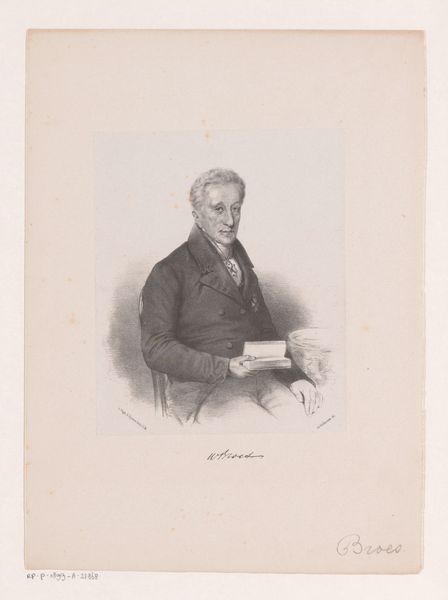
engraving
#
portrait
#
neoclacissism
#
light coloured
#
old engraving style
#
engraving
#
realism
Dimensions: height 215 mm, width 167 mm
Copyright: Rijks Museum: Open Domain
Curator: Let’s turn our attention to this finely rendered print: *Portret van Bernard de Jussieu*. It's an engraving, dating to before 1829, by Antonin-Marie Moine. Editor: The most striking thing is its gentleness. The pale tones and the subject's serene expression convey a quiet, almost contemplative mood. What do you make of the technique? Curator: Well, engraving as a medium was, in the 19th century, deeply entwined with scientific illustration. This isn't just a portrait; it’s also a document. Think of the tradition of botanical illustration, recording plants with scientific accuracy. Jussieu, after all, was a renowned botanist. Editor: Ah, so the choice of engraving adds symbolic weight to the subject as a man of science! But his clothing, the soft folds of his cravat…they suggest something beyond pure scientific objectivity. Curator: Certainly. Portraiture during this period, influenced by neoclassicism, served to project particular ideals and virtues onto the subject. Consider the institutional and societal role he occupied. Jussieu held a prestigious position at the Jardin des Plantes, the royal botanical garden. He embodies enlightenment values of reason and observation. Editor: And his face—etched with those fine lines—it’s like a map of acquired wisdom. There's something almost ancestral about that expression. As if, through him, we're glimpsing the very spirit of the age of reason. Curator: An astute observation. Images like this actively shape how we remember figures. They served a purpose of creating heroes in an age of profound changes. Editor: It's remarkable how this small engraving speaks volumes about the intersection of science, society, and individual character in the late 18th and early 19th centuries. It's more than just a likeness; it's an encapsulation of an era. Curator: Precisely. And by considering its historical context, we come to realize this simple print really has a deep resonance.
Comments
No comments
Be the first to comment and join the conversation on the ultimate creative platform.



